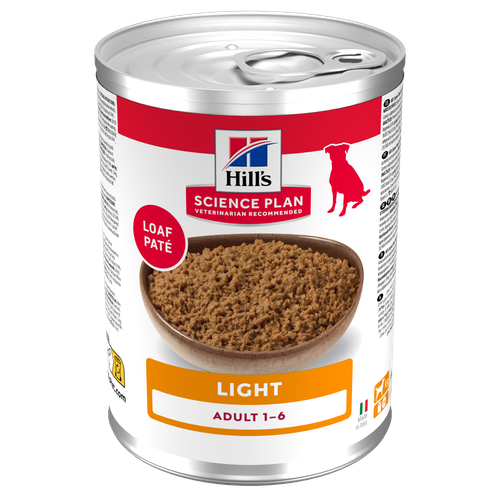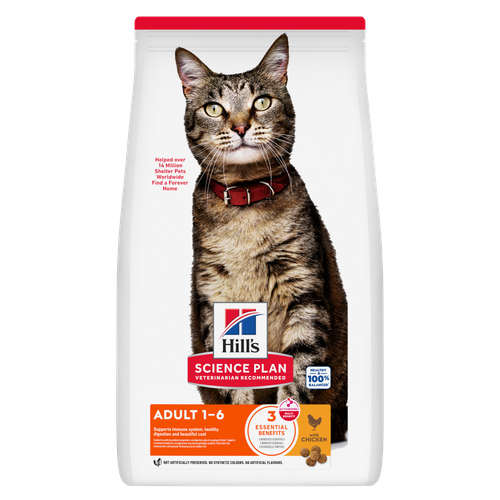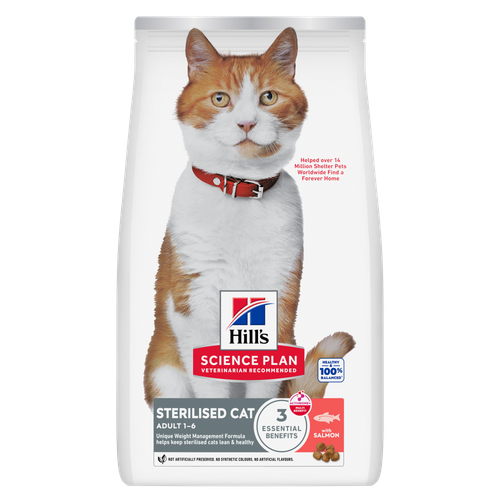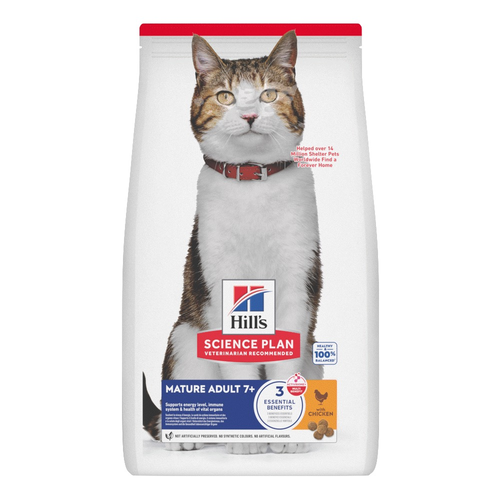
-
Find the right food for your petTake this quiz to see which food may be the best for your furry friend.Find the right food for your petTake this quiz to see which food may be the best for your furry friend.Featured products
 Adult Light Dog Food
Adult Light Dog FoodHill's Science Plan Light Adult Wet Dog Food is a complete premium pet food for adult dogs that tend to gain weight easily. This deliciously smooth loaf is formulated to deliver the appropriate amount of energy to support weight maintenance in adult dogs.
Shop Now Perfect Digestion Large Breed Puppy Food
Perfect Digestion Large Breed Puppy FoodPrecisely balanced nutrition with Hill's ActivBiome+ prebiotic blend actively contributes to supporting digestive health and overall wellbeing to help your pet feel their best
Shop Now Large Breed Adult Dog Food
Large Breed Adult Dog FoodHill's Science Plan Large Breed Adult Dog Food with Lamb & Rice is a complete pet food, specially formulated with ActivBiome+ Multi-Benefit Technology.
This food is specifically designed to fuel the energy needs of large breed dogs during the prime of their life.Shop NowFeatured products Adult Cat Food
Adult Cat FoodHill's Science Plan Adult Cat Food with Chicken is a complete pet food, specially formulated with ActivBiome+ Multi-Benefit Technology.
This food is specially formulated to fuel the energy needs of cats during the prime of their life.Shop Now Sterilised Adult Cat Food
Sterilised Adult Cat FoodHill's Science Plan Adult Sterilised Cat Dry Food with Salmon is specially formulated with ActivBiome+ Multi-Benefit Technology. It is a precisely balanced nutrition, tailored to meet the needs of sterilised cats, to help keep sthem lean & healthy.
Shop Now CULINARY CREATIONS ADULT CAT FOOD
CULINARY CREATIONS ADULT CAT FOODHill's Science Plan CULINARY CREATIONS Adult cat food with Salmon & Carrots was formulated to provide a great-tasting experience to cats. Its delicious flavour and texture are combine with essential nutrients to support cats' optimal health during the prime time of their life. Specially formulated with high-quality salmon protein, essential taurine for heart health & balanced minerals to support kidneys & bladder.
Shop Now -
Dog
- Dog Tips & Articles
-
Health Category
- Weight
- Food & Environmental Sensitivities
- Urinary
- Digestive
- Joint
- Kidney
-
Life Stage
- Puppy Nutrition
- Adult Nutrition
- Senior Nutrition
Cat- Cat Tips & Articles
-
Health Category
- Weight
- Skin & Food Sensitivities
- Urinary
- Digestive
- Kidney
-
Life Stage
- Kitten Nutrition
- Adult Nutrition
Featured articles The Incredible Science Behind Your Pet's Microbiome
The Incredible Science Behind Your Pet's MicrobiomeLearn what your pet's microbiome is, how it contributes to your pet's gut and overall health, and why nutrition is important in maintaining healthy microbiomes.
Read More Microchipping: The Facts | Hill's Pet
Microchipping: The Facts | Hill's PetThe government has announced that as of April 2016, all dogs in the UK must be microchipped by law.
Read More Pet Nutrition: What Makes "Healthy" Pet Food Healthy? | Hill's Pet
Pet Nutrition: What Makes "Healthy" Pet Food Healthy? | Hill's PetIn people, the right diet is very important. If you are eating the wrong way for your metabolism, activity level, age and lifestyle you could end up with health issues.
Read More -


Playing with your cat is an important part of maintaining their health and your bond with them. Luckily, they love to play!
 Providing opportunities for solo play is particularly important for indoor cats, especially if they spend much of the day alone.
Providing opportunities for solo play is particularly important for indoor cats, especially if they spend much of the day alone.
Kittens and adult cats are both stimulated by the same sort of games, though kittens don't require a great deal of encouragement to get started. Cat play is almost entirely about simulating behaviour associated with hunting.
Cats have a strong instinctual desire to stalk and kill prey so you'll find you have the most success if you can mimic the actions of something she's likely to hunt.
The right toys
The first thing you're going to want to find is a proper toy to play with your cat. If you're trying to stimulate prey hunting behaviour you don't want to use your hands. Even if your cat is gentle, she might bite if she becomes too excited. You want your cat to associate your hands with petting and feeding, not hunting and killing.
Good toys for cats are easy to find and most of the time you don't even have to buy them. They're usually just as interested in a piece of paper or a ping-pong ball as a manufactured toy.
Rolled up balls of tin foil, plastic caps from bottles, paper bags or anything that moves easily and makes a bit of noise is a prime candidate to be turned into a cat toy.
Dangers
Be wary of plain pieces of string, elastic bands or anything else your cat might swallow. Some thinner pieces of string, when stretched, can even become sharp. These might make good toys, but you musn't let your cat play with them unattended.
Sound stimulation
Toys that have a bells or 'squeakers' are especially good to give your cat if she is likely to be left on her own because the noise acts as an extra stimulus.
The important point to remember with all these toys is that you need to alternate them to prevent boredom. Don't just throw all your cats toys on the floor and leave them. Cats are very smart and will tire of toys quickly.


Tasty Tips
Instead, put out only one or two toys and change them regularly. This will be far more interesting for your cat.
Games
A fantastic type of toy for you and your cat to play with is the kind that has a ball, mouse or feather at the end of a string. Sometimes the string is also attached to a wand. These toys make it very easy for you to simulate moving prey for your cat.
Try to imitate a small animal sneaking around your furniture. Or swing it through the air like a bird, letting it occasionally land and hop around on the ground. Take your time, let your cat stalk or chase the 'prey' for a bit. After five or ten minutes, let your cat pounce on the mouse or snatch the bird out of the air. It's important that your cat feels like it has had a successful hunt.
Your cat may chew on the toy or carry it off. If you are both still having fun the toy can come alive again, or you can introduce a new one. Anything with a string on it shouldn't be left out for your cat to chew through and swallow. And remember, it's important to keep the toys fresh and exciting.
Favourites
Cats can become very attached to small stuffed toys, and every once and a while will bring them outside to play with. Some will meow and howl over a favourite stuffed animal. There is no conclusive explanation why they do this; however, it is all good fun and part of your cat's play.
How Often?
Two play sessions a day would be fantastic for both you and your cat. You might find having a playtime just before bed (or even adding a third one) will help settle down a cat that usually gets into trouble at night.
If your cat doesn't feel like playing the first time, don't get discouraged. Keep trying and you'll start to work out how and when your cat likes to play.


One of our staff authors prepared this article for you
Related products

Hill's Science Plan CULINARY CREATIONS Adult cat food with Salmon & Carrots was formulated to provide a great-tasting experience to cats. Its delicious flavour and texture are combine with essential nutrients to support cats' optimal health during the prime time of their life. Specially formulated with high-quality salmon protein, essential taurine for heart health & balanced minerals to support kidneys & bladder.

Hill's Science Plan Mature Adult Cat Food with Chicken is a complete pet food, specially formulated with ActivBiome+ Multi-Benefit Technology.
This food supports graceful aging in cats, providing a synergistic ingredient blend to help support energy & activity levels.

Hill's Science Plan Adult Sterilised Cat Dry Food with Salmon is specially formulated with ActivBiome+ Multi-Benefit Technology. It is a precisely balanced nutrition, tailored to meet the needs of sterilised cats, to help keep sthem lean & healthy.

Hill's Science Plan Adult Cat Food with Chicken is a complete pet food, specially formulated with ActivBiome+ Multi-Benefit Technology.
This food is specially formulated to fuel the energy needs of cats during the prime of their life.
Related articles

Learn about the causes of cat dermatitis, how to spot the symptoms and the best treatment options. Visit Hill's Pet for detailed guidance and tips.

Understand common skin issues in cats and how to manage them effectively. Learn signs and prevention, and get care tips. Find out more at Hill's Pet.

Learn how your cat's poo can be a good indicator of her overall health, including how to spot unhealthy or abnormal cat poop and what it might mean.

Cats with sensitive skin have special needs and even healthy cats can sometimes develop poor skin health. Learn more about sensitive skin symptoms in your cat, what you can do to help your pet feel more comfortable and get recommendations on sensitive skin cat food.

Put your cat on a diet without them knowing
Our low calorie formula helps you control your cat's weight. It's packed with high-quality protein for building lean muscles, and made with purposeful ingredients for a flavourful, nutritious meal. Clinically proven antioxidants, Vitamin C+E, help promote a healthy immune system.
Put your cat on a diet without them knowing
Our low calorie formula helps you control your cat's weight. It's packed with high-quality protein for building lean muscles, and made with purposeful ingredients for a flavourful, nutritious meal. Clinically proven antioxidants, Vitamin C+E, help promote a healthy immune system.

